Veloce: the biggest racing name in multi-billion pound Esports industry
In just five years Veloce has become the world’s biggest racing gaming media network while dipping a toe in real motor sport. Adam Hay-Nicholls visits its London HQ to meet the team behind a true British success
F1 esports
In March, Veloce Racing took its first Extreme E victory at the Desert X-Prix in Neom, Saudi Arabia, and in so doing became the first team in sports history to go from video games to the top step of a real world championship podium. We’ve seen racing drivers emerge from the gaming sphere before – such as the Nissan GT Academy’s Jann Mardenborough and Lucas Ordóñez a decade ago – but this is an actual nuts-and-bolts team that has transitioned from virtual to reality, albeit with the unpixelated talents of Kevin Hansen and Molly Taylor at the wheel.
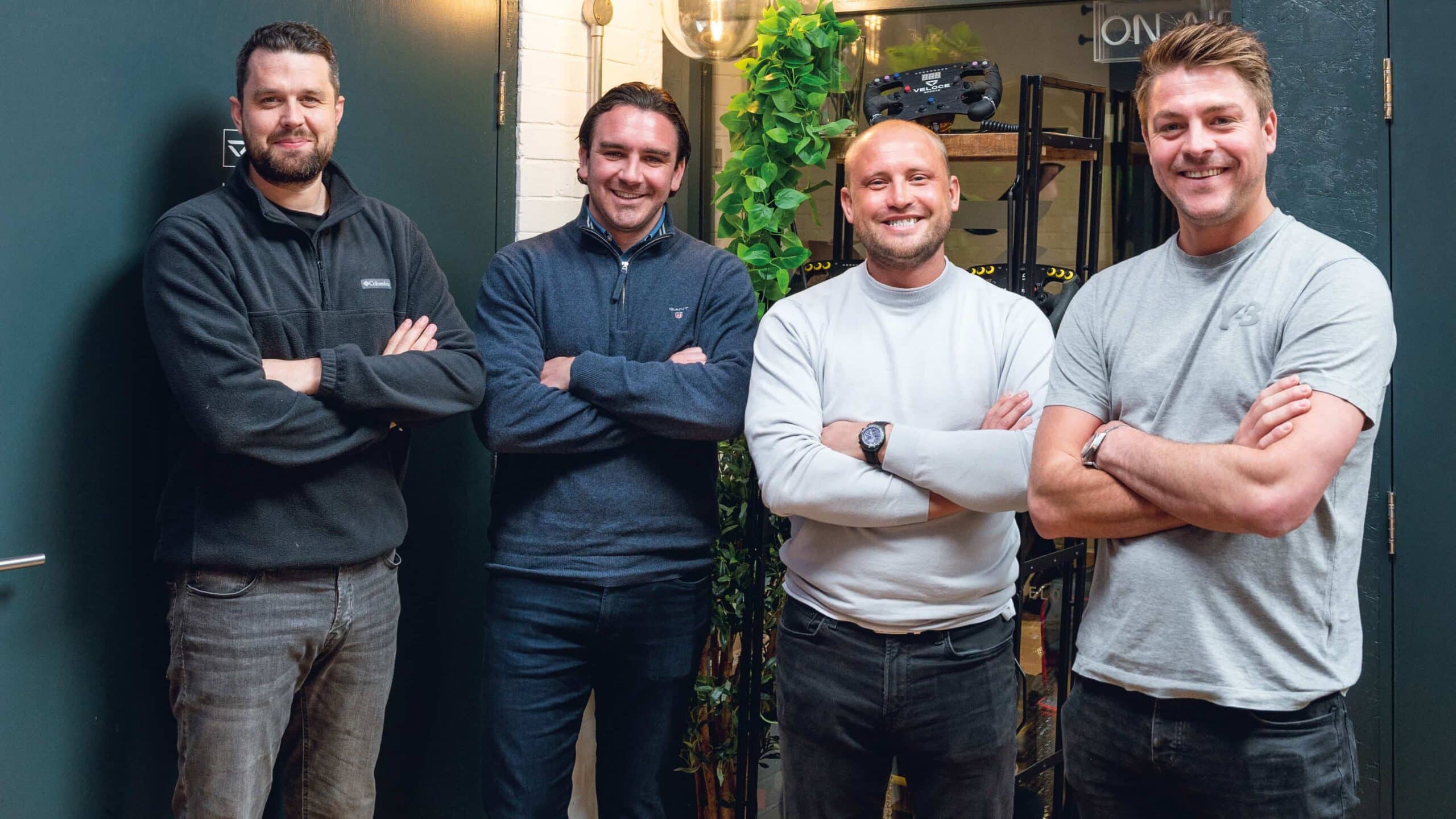
From left: Jamie MacLaurin, chief sporting officer, Daniel Bailey, chief commercial officer, Rupert Svendson-Cook, CEO, and Jack Clarke, chief innovation officer
Jayson Fong
Veloce started out in 2012 as a traditional driver management company (its last ‘real’ driver signing was Jamie Chadwick, who won the W Series title three times and remains on its books today). In 2018, it switched its focus from youngsters who put everything on the line at Silverstone, Spa and Zandvoort to those who rarely leave their bedrooms. It was an inspired business decision. Esports has become a multi-billion-pound industry. The barriers to entry are low, and in feeding and growing its community Veloce has become a media company that gets more eyeballs than Sky Sports F1, as well as an entrepreneurial outlet for the likes of Lando Norris.
Be it as a spectator or racing driver, I prefer my ‘damage on’. What’s the point of watching or participating in motor sport that isn’t real? Wasn’t it Ernest Hemingway who declared motor racing as one of three sports that aren’t games? (The others were bullfighting and mountaineering.) I therefore arrived at Veloce’s office bearing a grain of cynicism.

Our writer tackles a lap
Jayson Fong
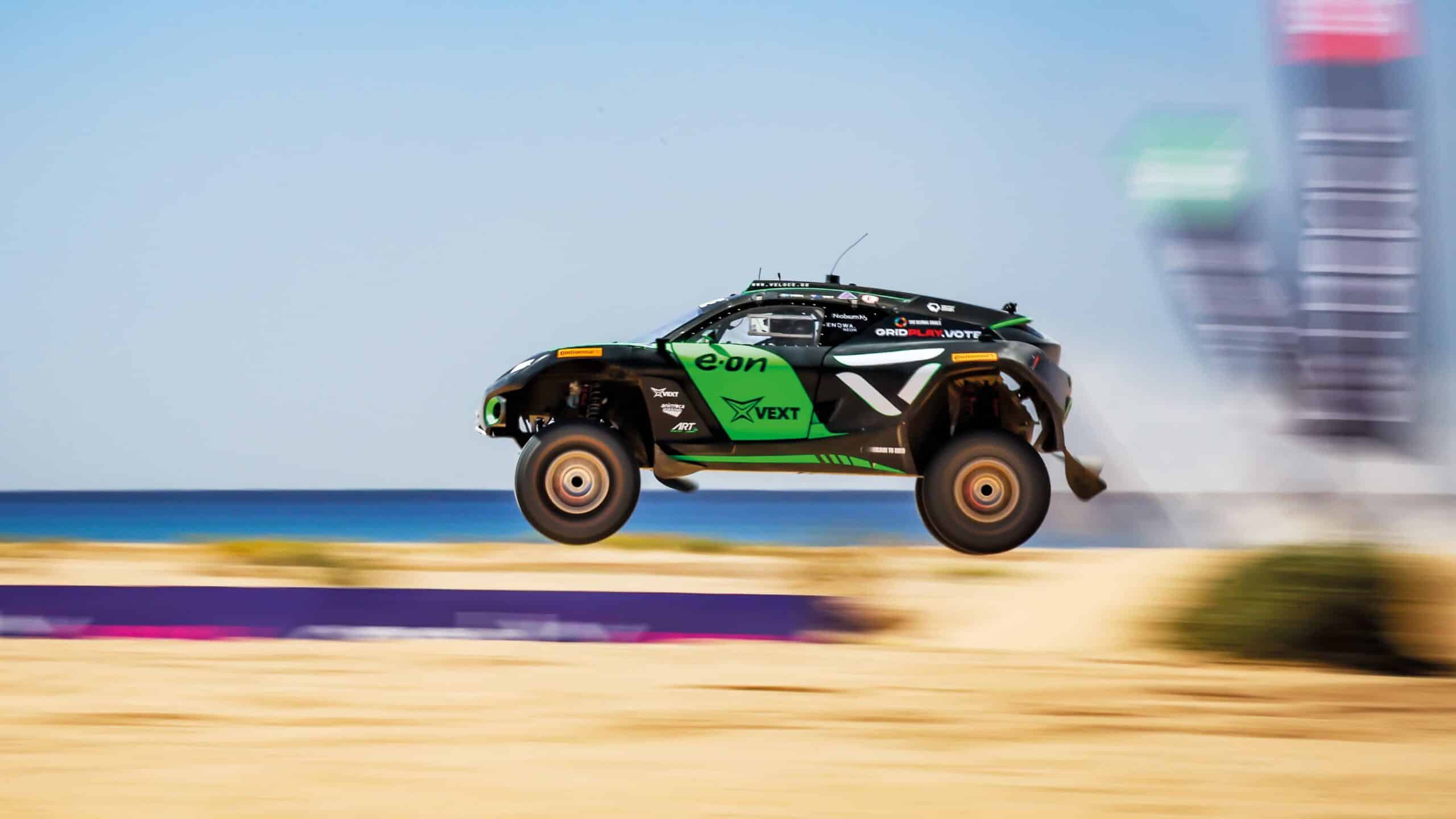
Veloce is also involved in real racing – Extreme E

It’s HQ is a house in London SW6
Jayson Fong
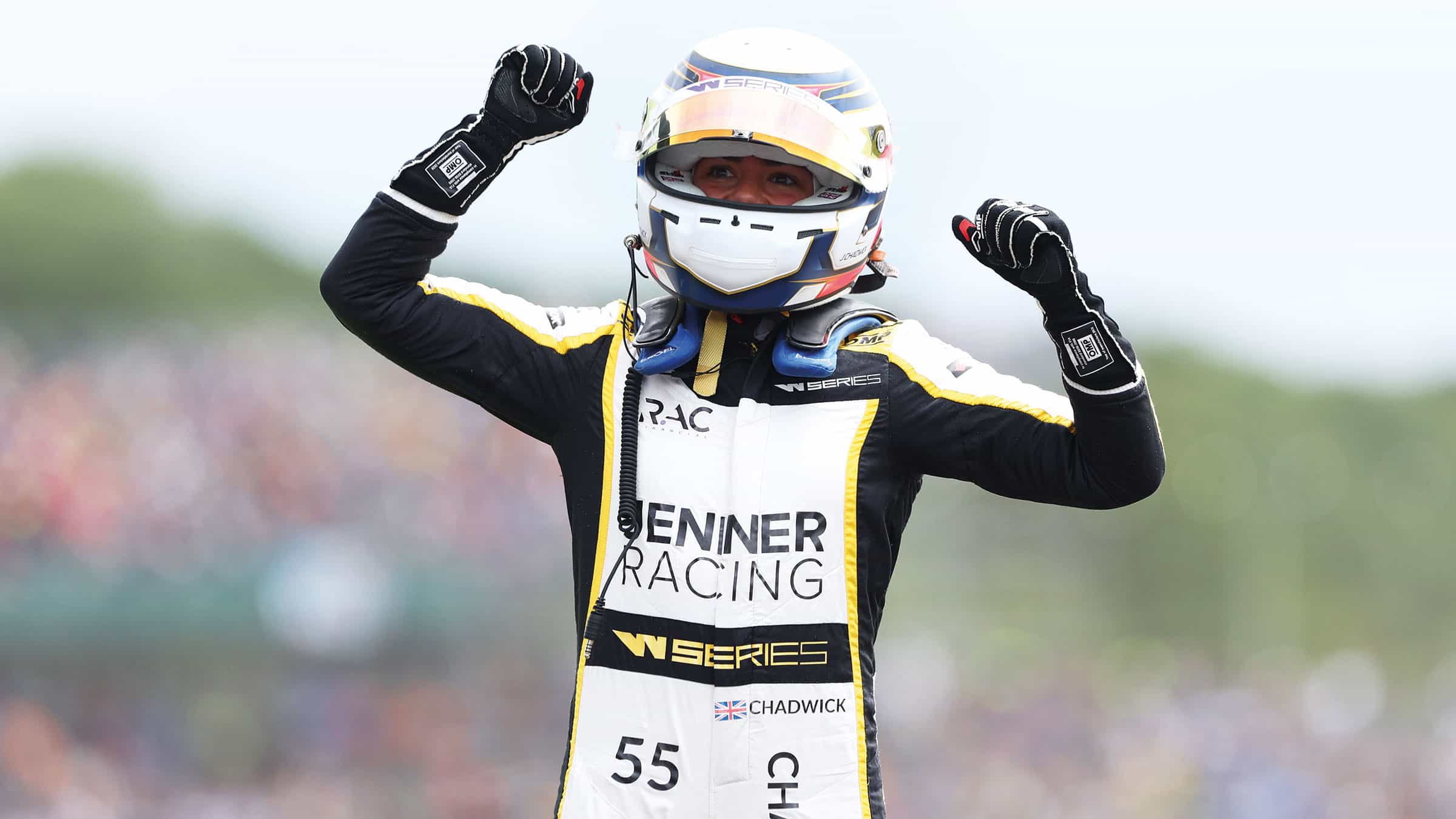
Jamie Chadwick has a long association with Veloce
Getty Images
Veloce is based out of a Victorian terraced house in Fulham, making it rather different to the factories of McLaren, Ganassi and Prodrive with whom it competes in Extreme E. Like any hip digital working space, there’s a beer keg in the kitchen. The ground floor is dominated by a simulator rig with a wraparound screen enclosed in what looks like a giant helmet.
Most gamers don’t have something like this at home, yet, apparently, the advantage is minimal. “You get a much more realistic experience, but in actual real performance not really,” judges Rupert Svendsen-Cook, 32, a former British F3 driver turned co-founder and chief executive of Veloce. So, no need for a six-figure rig, a PlayStation controller will do the job. “Esports and sim racing are different things,” he explains. “Sim racing is really niche. Esports is for gaming consoles. It’s a game, whereas with sim racing you’re worrying about every millimetre of ride height. It’s a lot more technical, and maybe not that fun.
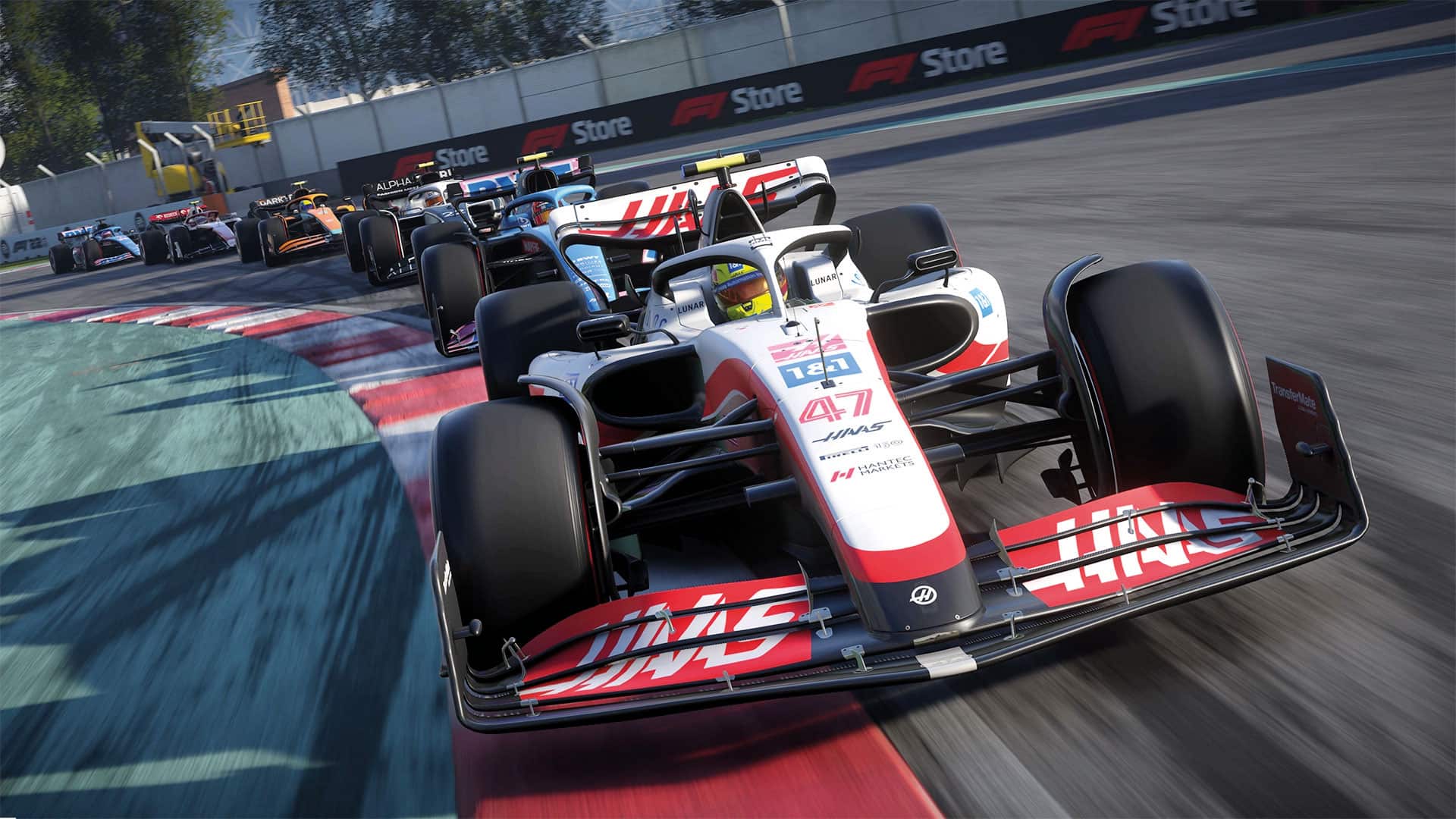
F1 22 is the most-played racing game.
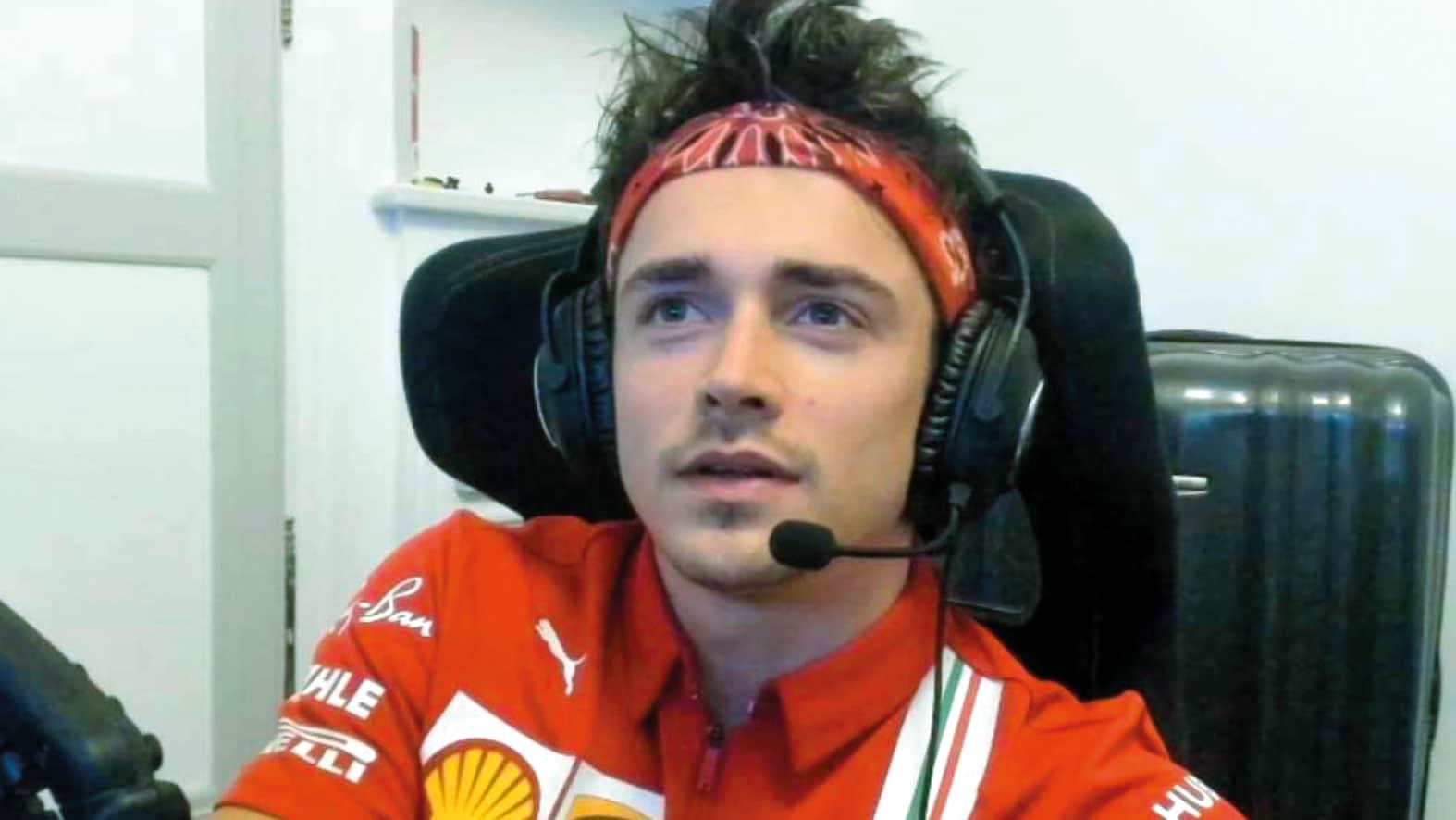
Ferrari’s Charles Leclerc going square-eyed playing esports.
“A lot of people in the world of real racing have tried to embrace esports. Without beating our chests, all they have ever tried to do is take exactly what they do in the real world and put it in the virtual world and call it esports. With the same level of regulation and control, it takes away the fun. There are more fun things kids can be doing. Our focus has always been on the content side first.”
Entertainment is at the heart of esports, then. The most popular racing game at the moment is the EA Sports-produced F1 22 (F1 23 will be released on June 16), followed by Assetto Corsa (the official GT World Challenge game) and Forza (where one can drive everything from an Austin-Healey Sprite to a Zenvo TSR-S). The Formula One Group sanctioned the F1 Esports Series in 2017, and the following year every F1 team bar Ferrari signed up and entered their own players. In 2019, the prancing horse turned up late to the party. Veloce runs McLaren and Mercedes’ esports teams. The current champ is a bespectacled Brit: Lucas Blakeley, 21, for McLaren Shadow. His skills appear to be transferable: last year, in a one-to-one heat at the Race of Champions in a real rallycross car, he beat Sebastian Vettel.
“The Formula One Group sanctioned the F1 Esports Series in 2017”
The F1 Esports Series has a prize pot of £600,000, which is split among the top five players. That’s pretty serious money, but it’s those that class themselves as content creators rather than competitors who are making the really big bucks. The content creators aren’t just streaming their games, they’re producing clips and shows that appeal to their audience and which are viewed on YouTube, Twitch, TikTok, Instagram and other streaming and social platforms. The very top content creators, most of whom still live with their mums, are raking up to £60,000 a month. Guys like @SteveTheGamer55 (1.2 billion views) are turning their screen dreams into reality, walking into a McLaren showroom and driving out in an Artura. When they go to the British Grand Prix, they get asked for selfies. Some fans choose to wear their merch instead of Lewis and Max’s kit.
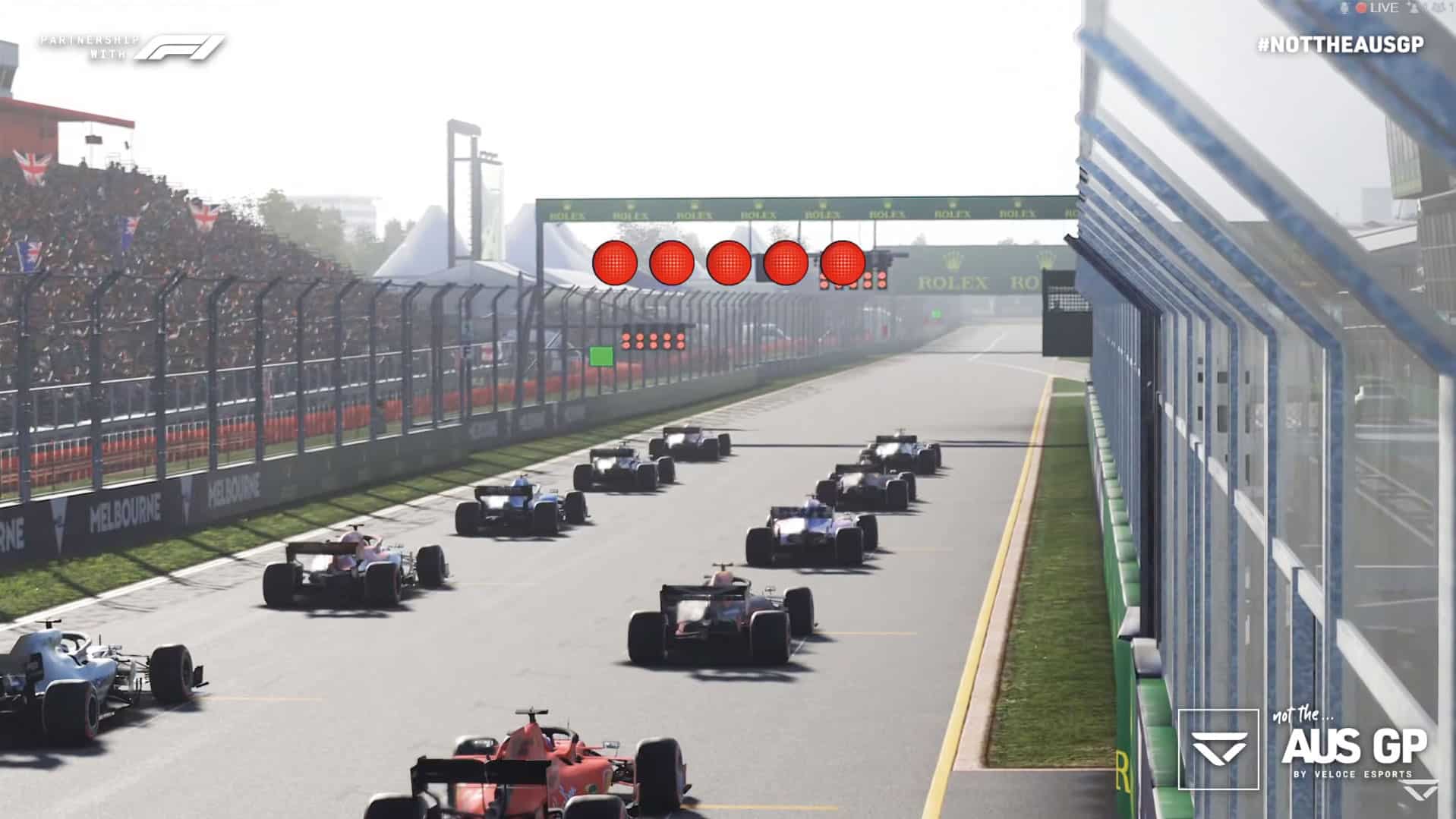
Max on the virtual grid. But is Jos keeping an eye on his son’s screen time?
Veloce is a content creator in its own right, but it also manages over 50 other creators, pro-gamers and partners. It currently counts over 650 million monthly views and a total of 37 million subscribers to its channels. “We’re now the biggest racing gaming media network in the world,” confirms CEO Svendsen-Cook. “We recognised that the real audience was in the casual gaming content space,” chimes in Daniel Bailey, chief commercial officer, as opposed to the niche of competition sim racing. Casual and often humour-based content: “That’s what drives the millions of views a month,” reveals the 32-year-old.
Jack Clarke, 35 – another co-founder and ex-racer – serves as chief innovation officer and is Bailey’s half-brother, says esports needs to be its own thing. “Formula 1 has real crashes, real people, real noise – it’s immersive. To create a virtual version of that isn’t very exciting. The fantastical element of gaming and creating a spectacle around that – how the Real Madrid goalkeeper shapes up against Charles Leclerc, or how a comedian fares against a pro esports player… It’s Wacky Races.”
It all sounds a bit silly and a waste of time, but then Clarke makes a very valid point. “You might choose to sit passively watching the football on TV with five of your mates on a Sunday, whereas the entertainment your son is choosing – he’s in it, and he’s playing against 50 mates around the world. He’s interacting and socialising more than you are.”
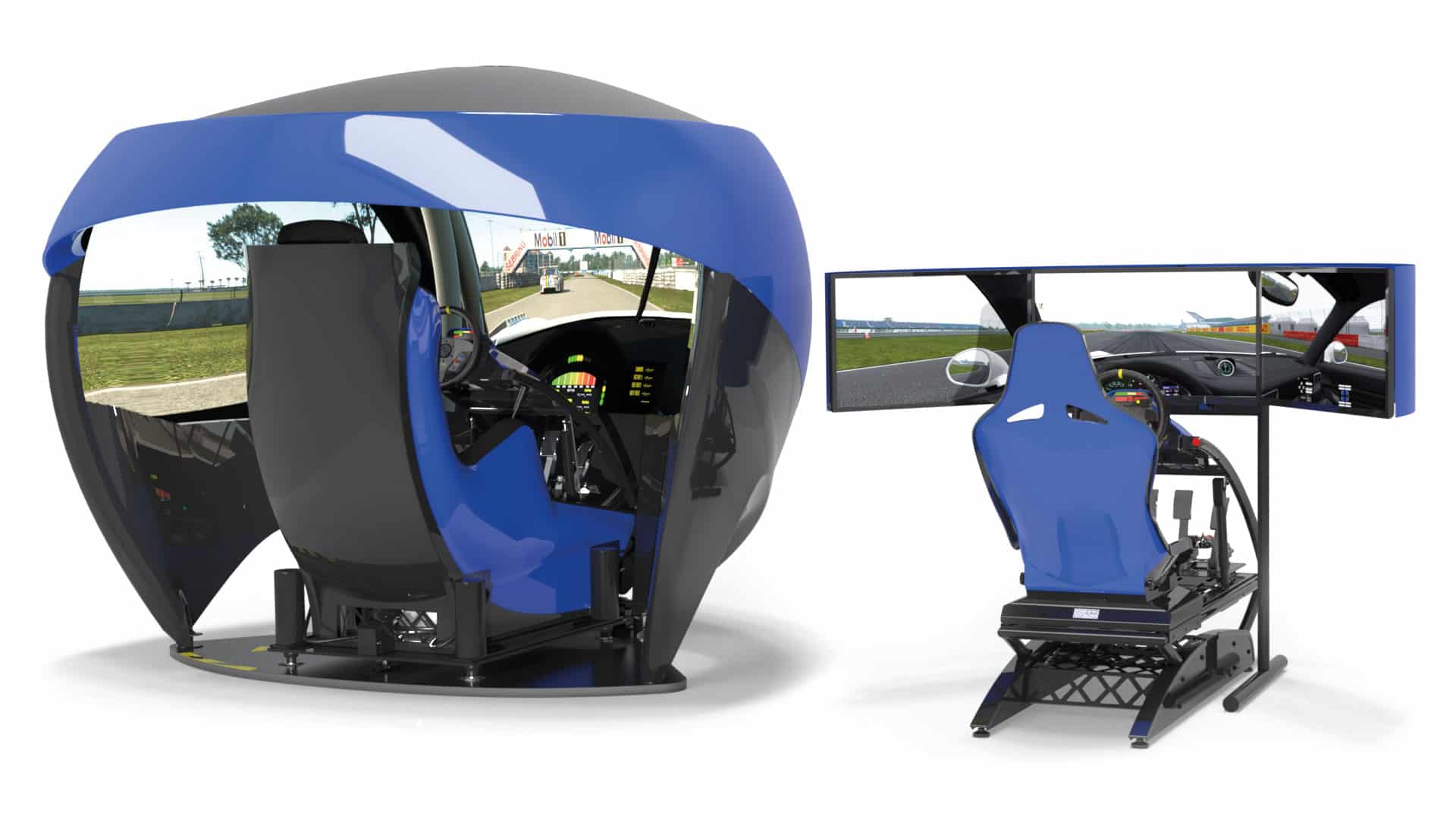
A high-spec variable driving position cockpit can cost upwards of £25,000 and give a realistic view of the track – but might not improve your results.
Timing is everything. The term ‘esports’ was first coined in 2000 by South Korea’s minister of culture, sports and tourism. Veloce’s pivot to esports came at the same time F1 launched its online series six years ago. Teams joined as a way to engage fans and deliver more visibility to their sponsors. Then Covid-19 struck. Veloce launched the ‘Not the AUS GP’ on the Sunday night of that cancelled meeting in Melbourne, encouraging F1 fans to tune in and its pro-gamers to shoulder the need for speed. By April 2020 you had Leclerc, Verstappen, Russell and Norris racing against the fans and each other in the virtual world.
Rupert explains how it started: “F1 had just come under new ownership with Liberty and things were moving on from the Bernie Ecclestone era. The focus was on digital audiences, gaming and the rest. F1 had an exhibition esports event at the end of 2017. We looked at the talent. They all qualified online and they were randomly put into teams. There were no contracts in place. So, we pretty much signed up every gamer on the grid.
“To be honest, it’s very hard to be the Schumacher or Hamilton of gaming. Every year there’s a new game, and there are millions of people playing it. It’s hard to have that level of consistency. Thousands are good enough to be at the top level of esports. When a new game comes out, the kid who was unbelievable on the last game is suddenly not as quick with the new one. They’ll lose form, and there’ll be a new kid in town. It’s brutal.”
“They’re likely to have a better career money-wise by sticking to esports”
Of course, you sometimes see this when there’s a major shake-up of the rules on the real track too. Some drivers/players adapt better than others. What is certainly the case is that far more people are able to pick up a console controller and play F1 22 (£69.99 on PS5) than will ever have the opportunity to try a Formula Ford for size.
There are perhaps thousands of people on this planet with even more natural talent than Verstappen who will never be discovered. But esports could help slash their odds. For players like Blakeley, James Baldwin (who was given £800,000 for a full season’s racing in British GT after he won the World’s Fastest Gamer on Amazon Prime) and (who made the switch from Formula Renault to esports when he ran out of budget and who won the F1 esports title in 2021), gaming is a far more attractive business model. “There is no business model in the junior formulae that works apart from writing a big cheque,” agrees Rupert. “Some have that ambition, to race in the real world and if they want we’ll try to help them, but they’re likely to have a much better career money-wise by sticking to esports.”
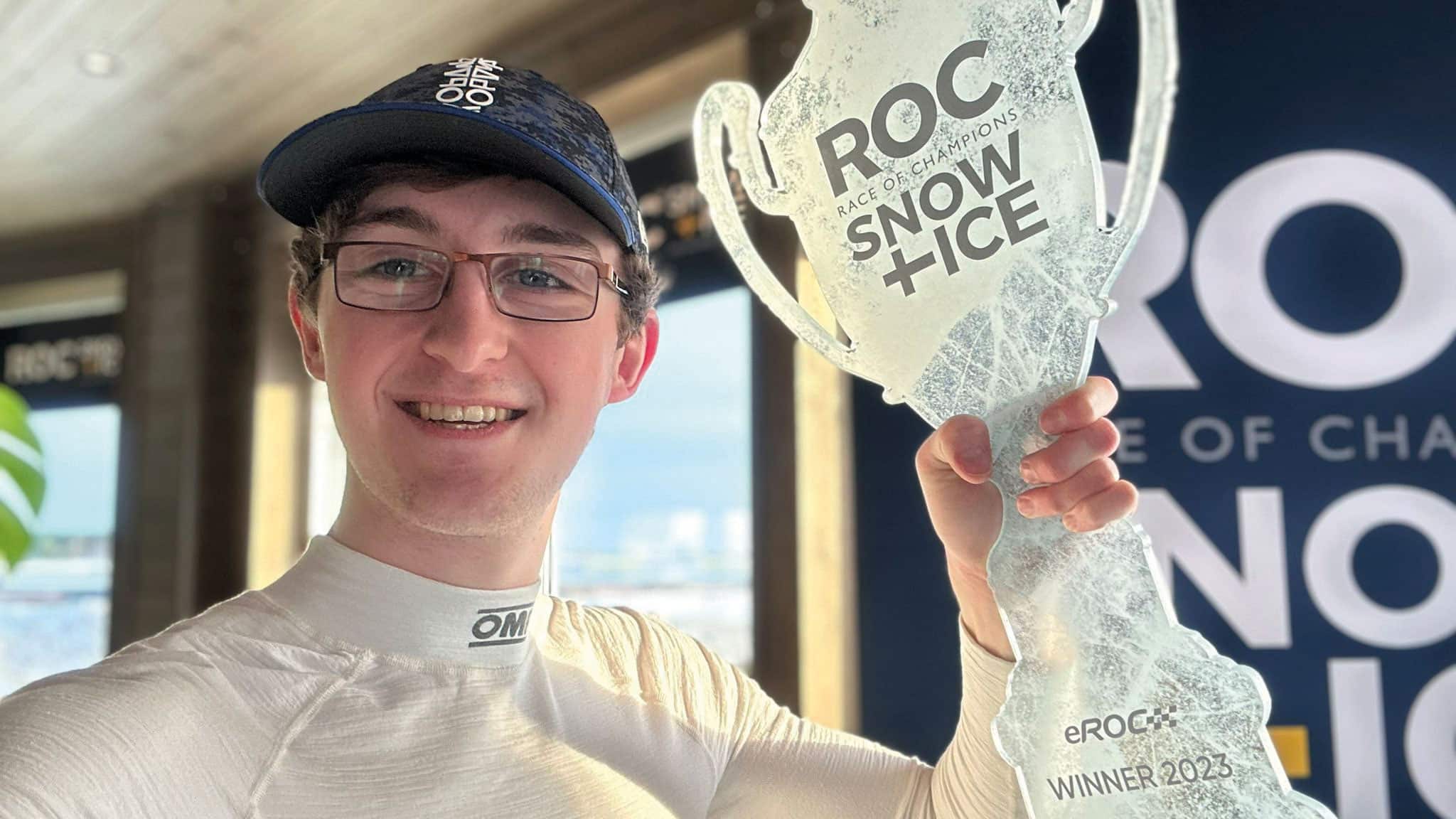
McLaren Shadow’s Lucas Blakeley
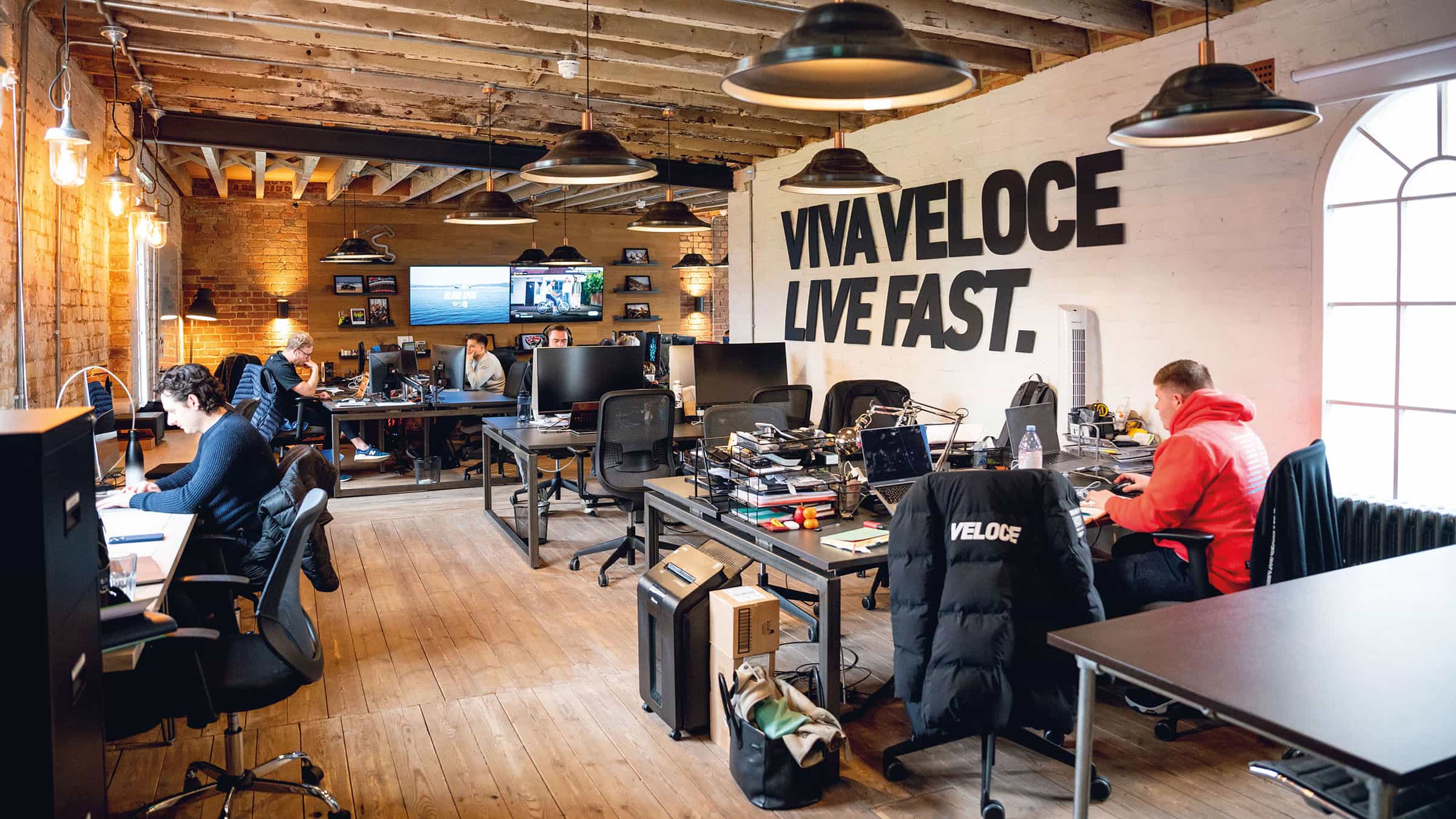
Veloce ‘factory’
Jayson Fong
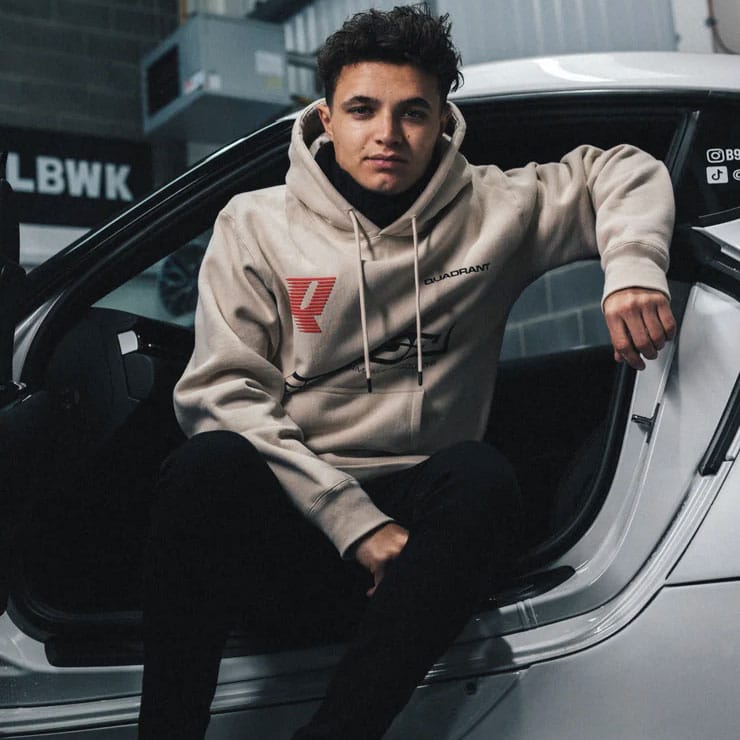
Get behind Lando Norris and Quadrant with this stylish hoodie
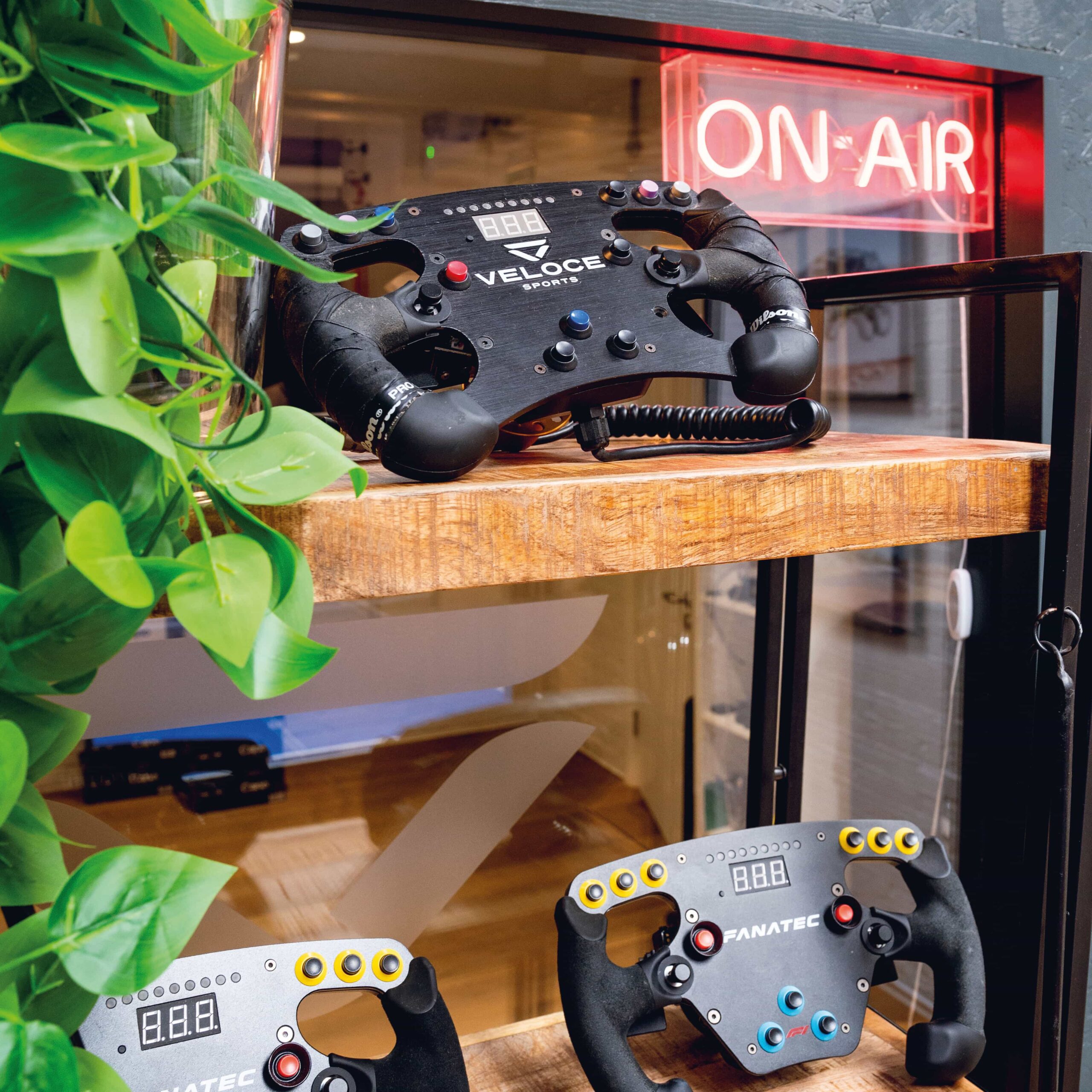
Fanatec ClubSport steering wheel from a motion simulator
Jayson Fong
In providing the competitors, the platform and the audience, Veloce is creating an ecosystem the likes of which we haven’t seen in professional sport before. “We have all these pro gamers, 10 teams, and enough gamers and teams to create a tournament, and then we broadcast the tournament,” says Jack. “If you use the analogy of Wembley, we put the players on the pitch, we have a hand in both the teams, we put the audience in the grandstand, and we have the broadcasting rights as well.”
One of Veloce’s more recent ventures is Quadrant, a partnership with Lando Norris. Its YouTube channel has 600,000 subscribers. It’s TikTok account has 300,000. It features videos by Lando and other presenters larking around and streaming games. The clip of Lando playing F1 21 for the first time has four million views. Quadrant-branded hoodies are £85 and flying off the shelves. “Our creators are characters who have a lot of highly engaged followers,” says Svendsen-Cook. “Lando is part of the community and he’s one of the characters. He describes himself as a full-time streamer, part-time F1 driver.”
The main age group for F1 esports is older than you might think: 21 to 34. Unsurprisingly, it’s mostly males, but at the younger end (14 to 18) a quarter of the audience is female. Above that, females account for 15% and many have arrived off the back of Drive to Survive. The Netflix series has increased interest in F1 across the board. The main markets for esports are the UK, US and the Netherlands, followed by Germany, Italy, France and South-east Asia.
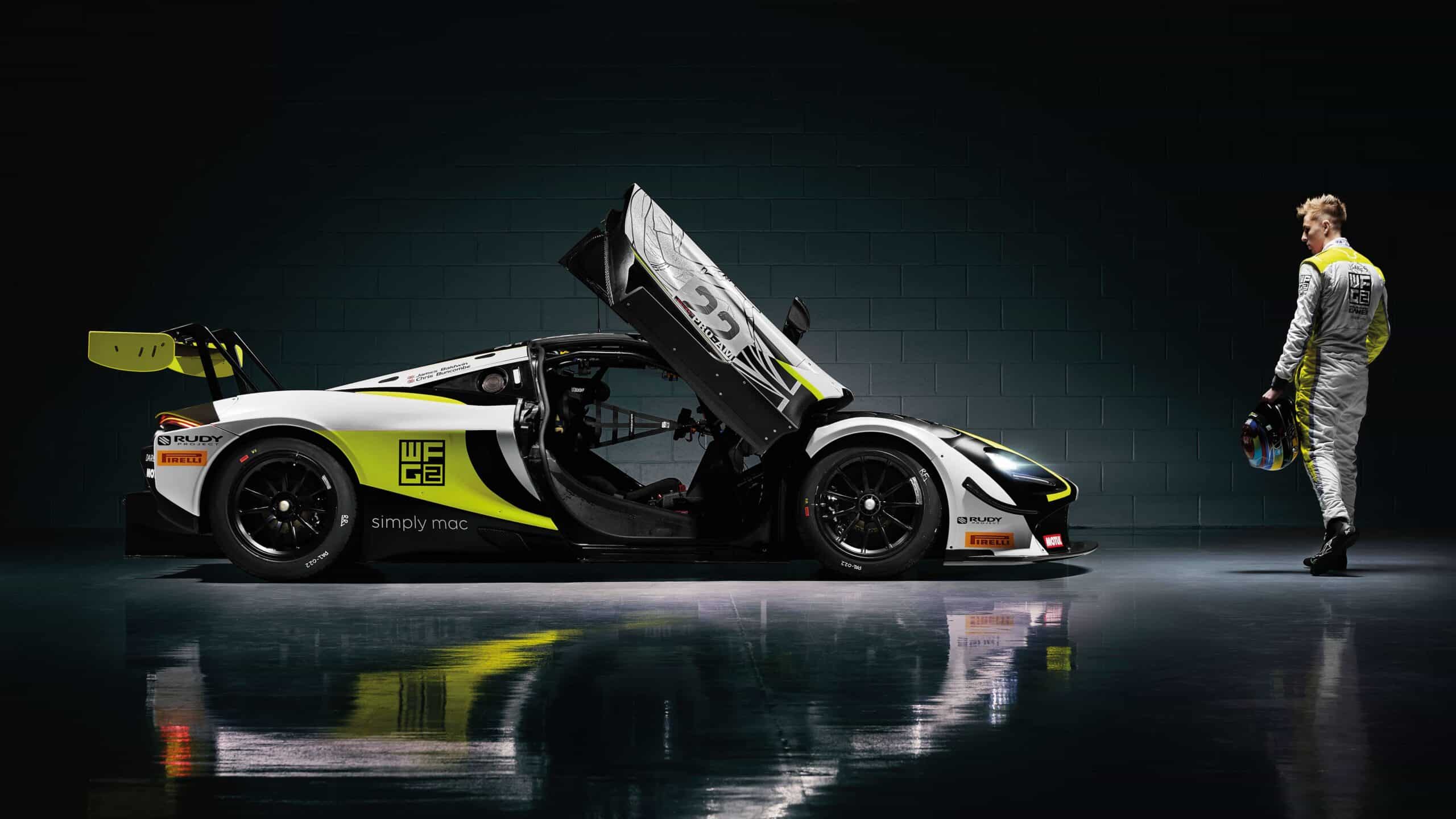
World’s Fastest Gamer James Baldwin was thrust into the real world of racing in 2020’s British GT.
In competing in Extreme E, and with the help of investors Jean-Éric Vergne and Adrian Newey, Veloce is now straddling both the real and virtual worlds. “The names on that grid are huge – Hamilton, Rosberg, Sainz, Andretti,” says Bailey, whose responsibilities include being CEO of the XE team. “People are interested now we’re beating them.” I asked him if we might ever see a Veloce F1 team and he said something about a “Web3 token VEXT decentralised fan-owned and led F1 team” that I didn’t understand, but that he “wouldn’t rule it out”. Clarke clarified: “We don’t plan to pump the brakes. We love competing and we love real racing, and it makes sense if the fans and partners come on the journey.”
They may be disrupting the industry, but Clarke and Bailey’s ties with motor sport go back to the beginning – literally. Their great-grandfather, Wesley J Tee, owned Motor Sport magazine for 60 years from 1936. “We all have heritage in the sport,” says Daniel. “Rupert and Jack raced in it. My dad [Julian Bailey] was an F1 driver. And our great-grandfather ran the magazine we’re talking to now. We love the culture so much that we want to ensure it embraces new trends and audiences to maximise its own potential.”
